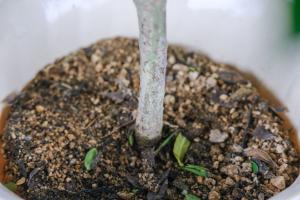How Often Should You Water Baby Weed Plants Indoors?
When growing marijuana indoors, it is important to know the proper watering techniques for your plants. Watering these plants can be tricky, especially for beginners. Overwatering and underwatering can both have negative effects on the growth and health of your cannabis plants. So how often should you water baby weed plants indoors? In this article, we will discuss the factors that impact the watering frequency of your plants and provide guidelines to help you keep your plants happy and healthy.
Factors That Affect Watering Frequency
Before deciding on the frequency of your watering, you need to understand the factors that can affect the needs of your plants. The primary variables that impact the watering frequency of baby weed plants are the temperature, humidity, growing medium, and size of the pots.
Temperature and Humidity
Temperature and humidity are essential factors for growing cannabis. Higher humidity levels in the growing area prevent the soil from drying out and reduce the need for frequent watering. However, high humidity can also cause overgrowth, mildew, and other issues, so maintaining proper humidity levels is crucial.
Temperature, on the other hand, can increase the rate of moisture loss from the soil and the plants, meaning your plants need more watering. This is especially true when temperatures are consistently above 80°F (27°C).
Growing Medium and Pot Size
The growing medium and pot size both affect how often you should water your plants. Plants grown in soil tend to require less frequent watering compared to those grown in hydroponics or coco coir. Smaller pots dry out quicker than larger pots, meaning you need to water more frequently if you use them.
Guidelines for Watering Baby Weed Plants Indoors
Now that you know the factors that impact the watering frequency of your plants, here are some guidelines to help you optimize your watering schedule for baby weed plants grown indoors:
1. Starting Out
When first planting your seeds or clones, start with a saturated growing medium. After planting, wait a few days to allow the growing medium to dry out slightly before watering again, ensuring it doesn't remain too wet.
2. Pay Attention to the Soil
The easiest way to determine if you need to water your plants is by checking the soil moisture. Use your finger to poke the soil – if it feels dry to the touch, it's time to water your plants.
3. Overwatering
Overwatering should be avoided as it can lead to root rot and stunted growth. A common reason for overwatering is if the container doesn't have proper drainage holes. Make sure the container has adequate drainage, so the excess water can run off.
4. Underwatering
Underwatering can also negatively impact plant growth. If it's too dry, your plant will start to wilt and suffer from nutrient deficiencies. Don't wait for your plant to wilt, as it can be difficult to restore a plant that has been severely dehydrated. If in doubt, check the soil moisture levels and water as needed.
5. Frequency
As a general rule of thumb, water your plants when the top inch of the soil feels dry to the touch. Most growers aim for a watering schedule that is two or three days apart but adjust as needed according to the variables we discussed before.
Final Thoughts
Watering your baby weed plants indoors can seem like a daunting task, but with the right guidelines and understanding of the variables, it becomes much more manageable. The key is to maintain soil moisture levels while avoiding overwatering or underwatering. Remember to pay attention to the temperature and humidity, growing medium and pot size, and check the soil moisture levels regularly to keep your plants happy, healthy, and flourishing.

 how many times do yo...
how many times do yo... how many planted tre...
how many planted tre... how many pine trees ...
how many pine trees ... how many pecan trees...
how many pecan trees... how many plants comp...
how many plants comp... how many plants can ...
how many plants can ... how many plants and ...
how many plants and ... how many pepper plan...
how many pepper plan...





























